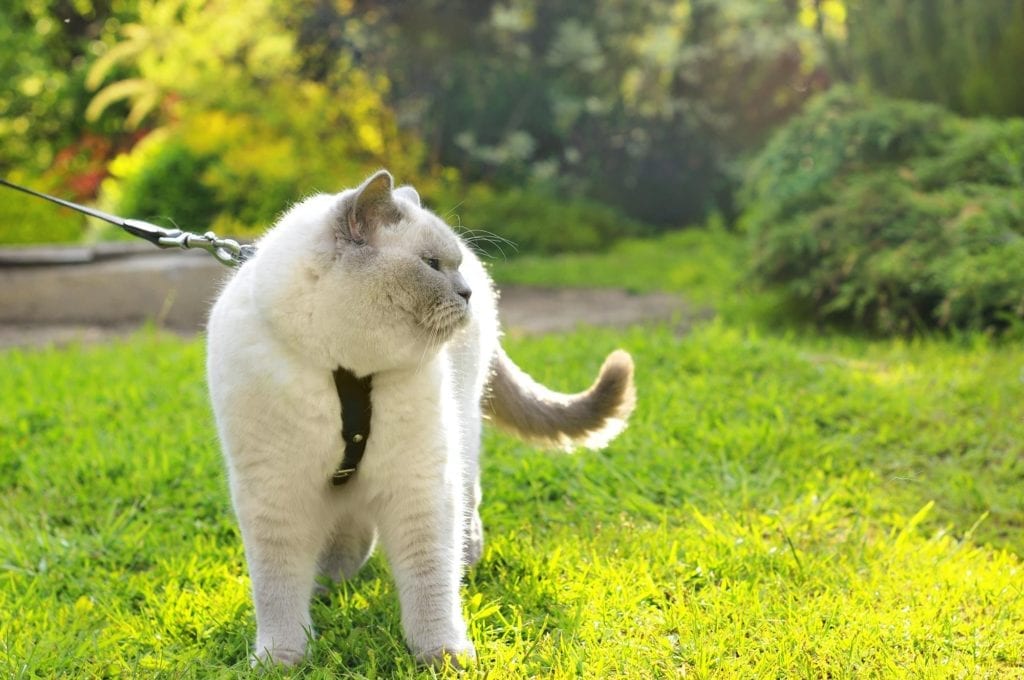 If you’re one of the many feline owners who feel a bit envious every time you see a dog being walked, there’s good news! While it may seem out of the ordinary, many cats can learn to walk on a leash and actually enjoy it – when positive reinforcement training is used.
If you’re one of the many feline owners who feel a bit envious every time you see a dog being walked, there’s good news! While it may seem out of the ordinary, many cats can learn to walk on a leash and actually enjoy it – when positive reinforcement training is used.
Learning how to leash train your cat (and crate train!) also offers many benefits beyond just enjoying a springtime stroll together. Leash training can help build confidence, encourage socialization, and can even make those trips to the vet less stressful.
Simple Steps to Successfully Leash Train Your Cat
While it may have once been odd to see a cat on a leash, it’s becoming much more common these days. This is especially nice for indoor cats – with the bonus of keeping them safe while providing supervised outdoor exercise.
To begin leashing training your meow pal:
- Make sure you have the right gear. We recommend a cat-specific, fitted harness that extends around the chest rather than a collar (since it can be easily slipped). Keep leashes to a length no longer than 5-6 feet; 4 feet is safer.
- Take time to acclimate your cat to the harness. At first, your fur friend probably won’t like the feel of the leash and harness. A good way to get your pet to embrace it is to associate it with rewards, such as yummy treats, catnip playtime, or short stints on the leash in the backyard.
- Begin in safe, enclosed areas with minimal noise. Choose a quiet fenced area, a screened porch, or contained deck to allow your cat to explore while on the harness. Let him or her choose the pace, and simply walk alongside without putting any pressure on the leash.
- Set a leisurely pace. Your cat will be quite different from the typical dog and will likely want to stop and smell the proverbial roses rather than rush down a sidewalk or to a specific destination. In fact, your cat may be content to just explore the hedgerow in the backyard or chill and watch the birds fly overhead. The point is to make it a safe, enjoyable experience – so relax!
- Try a quiet park or low traffic sidewalk. If your cat seems to be enjoying the process of leash walking, you can move to more interesting areas, such as a small park or wooded path in the neighborhood. Make sure to scan for other animals and avoid places where people let their dogs off leash.
- Don’t forget a reward. If your cat does a great job on the leash or is good about not trying to tug ahead, don’t forget that cats respond to positive reinforcement just like dogs. Bring some small treats and offer plenty of scratches and verbal praise for a walk well done.
Leash training your cat can result in a wonderful bonding experience for you and your pet. What better time to take on the task than during the beautiful spring season?
For more information about how to leash train your cat, please give us a call.
Recent Posts
About Us
We know that choosing the right veterinarian for your pet (and you) can be a challenge. Yet, with our stress-free handling, our long-term, experienced staff, and a state-of-the-art facility, we make the decision an easy one!
